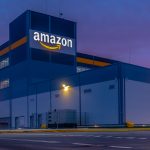
- Data Centers
- Earnings Season
- Magnificent 7
- Stock Market
AWS Growth Slows to 17% as Azure, Google Cloud Outpace Rival
6 minute read

Cloud computing competition intensifies as AWS market share faces pressure from surging Microsoft Azure and Google growth
Key Takeaways
- AWS growth lags rivals at 17% as Microsoft Azure (33%) and Google Cloud (31%) outpace Amazon’s cloud division despite its market-leading position
- Operating margin drops to 32.9% marking AWS’s lowest profit-to-revenue ratio since late 2023 as AI infrastructure investments surge expenses to $20.7 billion
- Amazon shares fall in after-hours trading following disappointing guidance with operating income projections below Wall Street expectations amid $100 billion AI spending plans
Introduction
Amazon CEO Andy Jassy faces mounting pressure from Wall Street as the company’s cloud computing division shows signs of deceleration in the intensifying AI race. AWS reported 17% revenue growth this quarter, significantly trailing Microsoft Azure’s 33% and Google Cloud’s 31% expansion rates. The tepid performance has investors questioning whether the cloud market leader can maintain its dominance as competitors accelerate their AI offerings.
Amazon shares dropped in after-hours trading following Jassy’s conference call, where analysts pressed him on AWS’s competitive positioning and uncertain AI strategy. The market reaction underscores growing concerns about Amazon’s ability to capitalize on the AI boom that has propelled its rivals to faster growth rates.
Key Developments
AWS generated $30.87 billion in revenue during the quarter, representing an 18% increase from the previous year and slightly exceeding analyst forecasts. However, the growth rate marks a concerning trend as the gap widens between AWS and its primary competitors in the cloud infrastructure market.
Operating expenses surged to $20.7 billion from $16.9 billion year-over-year, driven primarily by AI-related investments and infrastructure spending. This expense increase compressed AWS’s operating margin to 32.9%, down from nearly 40% in the first quarter and representing the lowest profit-to-revenue ratio since late 2023.
Amazon CFO Brian Olsavsky attributed the margin pressure to seasonal stock-based compensation increases, unfavorable foreign exchange rates, and higher depreciation costs from ongoing AI infrastructure investments. The company’s total capital expenditures reached $31.4 billion in the second quarter, with much of the spending directed toward AI services and data center expansion.
Market Impact
Amazon shares trade down in extended hours following the earnings announcement, with investors reacting negatively to the company’s operating income guidance. The company projects operating income between $15.5 billion and $20.5 billion for the coming quarter, with the midpoint falling substantially below Wall Street expectations.
The stock performance reflects broader market concerns about AWS’s competitive position. Amazon shares have gained just over 6% year-to-date, trailing the S&P 500’s 8% advance over the same period. This underperformance comes as cloud infrastructure spending across the industry surges 21% year-over-year, largely driven by AI service adoption.
According to Business Insider, AWS maintains its market leadership with a 30% share, followed by Microsoft at 20% and Google at 13%, but the growth rate differential suggests potential market share erosion ahead.
Strategic Insights
Jassy positions AWS’s strategy around custom-built AI chips and “agentic AI” systems capable of autonomous decision-making. The company launched Trainium chips that deliver 30-40% better price-performance for inference workloads compared to competitors, targeting cost-sensitive enterprise deployments.
AWS introduces new tools including Kiro, an agentic integrated development environment allowing natural language coding, and open-source frameworks like Strands and AgentCore for autonomous AI agents. Jassy envisions AWS becoming the primary platform where enterprise AI agents operate independently, making purchasing decisions without human intervention.
The company faces significant capacity constraints across electricity, chips, and server components, with power representing the primary bottleneck. Jassy indicates these supply chain challenges may persist for several quarters, potentially limiting AWS’s ability to capture accelerating AI demand.
Expert Opinions and Data
Morgan Stanley analyst Brian Nowak questioned AWS’s AI competitive positioning during the earnings call, suggesting the company may be losing ground to rivals. Jassy responded by characterizing the AI market as “early” and “top-heavy,” emphasizing AWS’s technological advantages in security and service breadth.
“The second player is about 65% the size of AWS,” Jassy noted, defending the company’s market position while acknowledging competitive pressures. He described capacity constraints in concrete terms: “the cloud’s real bottleneck lies in concrete, copper, and kilowatts.”
Baird analyst Colin Sebastian expressed concern over market reactions to AWS’s performance, highlighting competitive gains by Azure and Google Cloud Platform. Conversely, Pivotal Research Group’s Jeff Wlodarczak maintains a bullish outlook on Amazon’s long-term potential despite near-term challenges.
AWS’s customer base has expanded to 4.19 million businesses, representing a 357% increase since 2020, with growth concentrated among startups and small-to-medium businesses. This expansion demonstrates continued market penetration despite intensifying competition from Microsoft and Google.
Conclusion
AWS confronts a critical inflection point as its dominant market position faces unprecedented competitive pressure from faster-growing rivals. While the division maintains leadership in market share and absolute revenue scale, the widening growth rate gap with Microsoft and Google raises questions about future positioning in the AI-driven cloud market.
The company’s massive AI infrastructure investments strain current profitability while capacity constraints limit its ability to fully capitalize on surging demand. AWS’s success in the coming quarters will largely depend on whether its custom chip strategy and agentic AI focus can differentiate its offerings sufficiently to regain growth momentum against increasingly aggressive competition.








